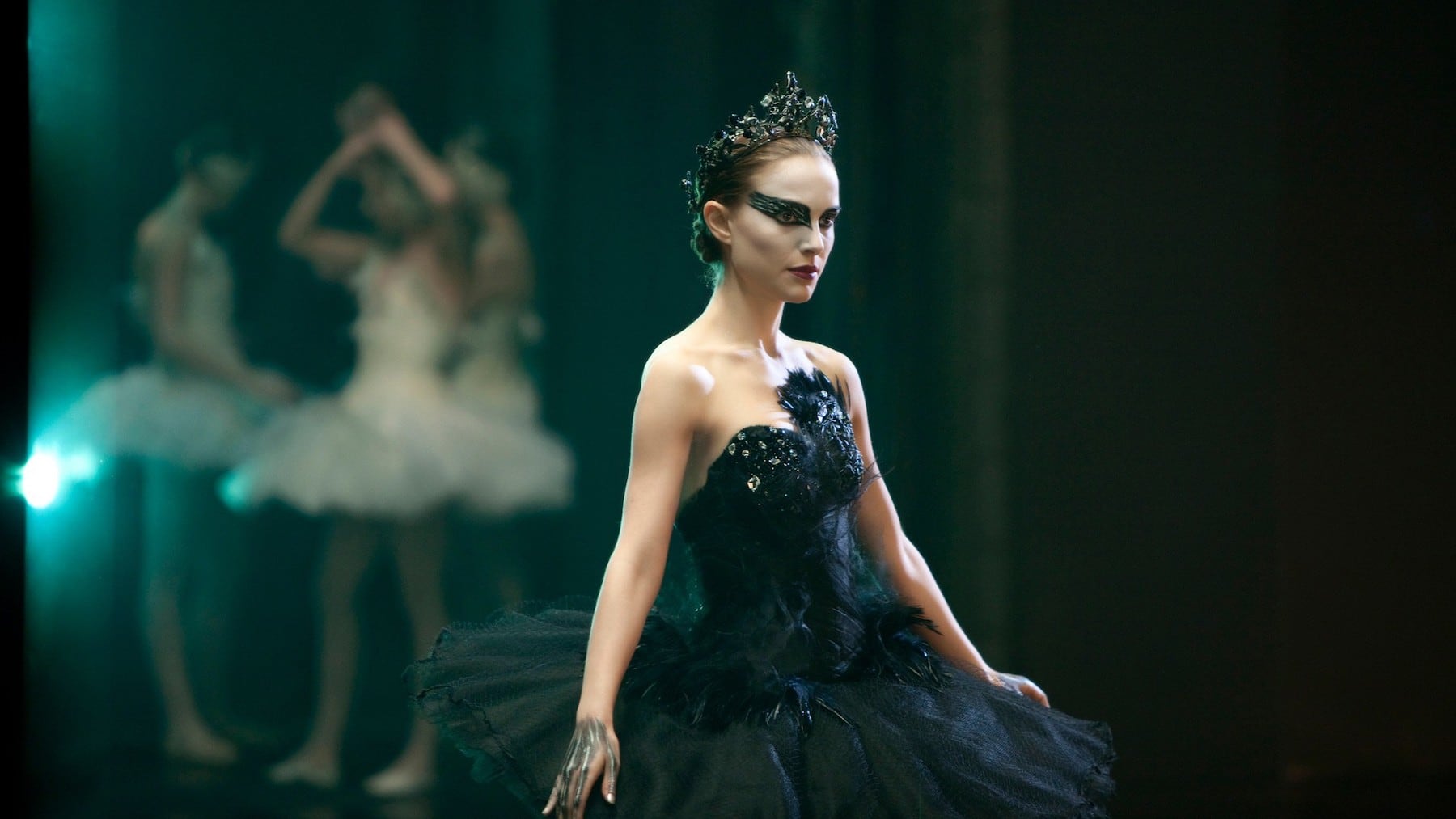The impact of the danse macabre cannot be understated. The artistic movement, whose name literally translates to “dance of death,” is generally thought to have begun in the 15th century. After the height of the Black Death had passed, humanity was grappling with a new understanding of mortality, one where death could strike at any time.
The danse macabre drew on this. The name is a bit of a misnomer, though. The “dance” aspect was typically metaphorical rather than literal. Although there certainly are famous works of art showing skeletons busting some moves, the dance being referred to was the one that we all unwittingly do. You know, the one from our cradles to our graves.
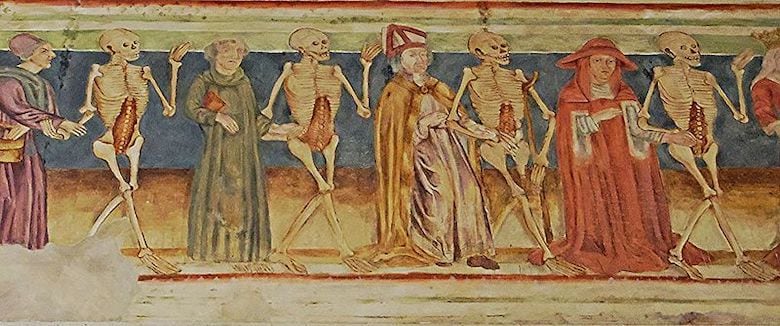
The idea of invoking our own mortality has remained an important touchstone in horror over the centuries, but the modern danse macabre takes a more literal approach. The scary cinema of today shows us that dance itself is something that can be deeply disturbing. It’s something that we all do to feel alive, yet that darkness still lurks in between flexing sinews and tensed muscles.
To understand how dance functions in horror today, let’s take a look at some stand out examples of dance horror movies. We’ll then compare and contrast the use of dance in two very different horror movies: Black Swan and Suspiria. (Don’t worry… it’s the Argento version.)
Dance Horror Movies
To the uninitiated, the idea of a dance horror movie might not make much sense at all. Dance is beautiful, fragile, tender. Horror is guts, gore, galore. Where’s the overlap?
Well, you don’t need to look too far to find some excellent dance scenes from horror movies. Even just a short overview shows just how diverse the use of dance can be in a movie with darker themes.
Starting with a more straightforward example, we can look at the infamous “Goodbye Horses” dance from Silence of the Lambs. As Buffalo Bill gets down to some new wave, a tortured and kidnapped girl begs for mercy from below. The contrast between Bill’s aloof dancing and the reality of the situation is sickening, and it gives insight to the character’s incredibly twisted mind.
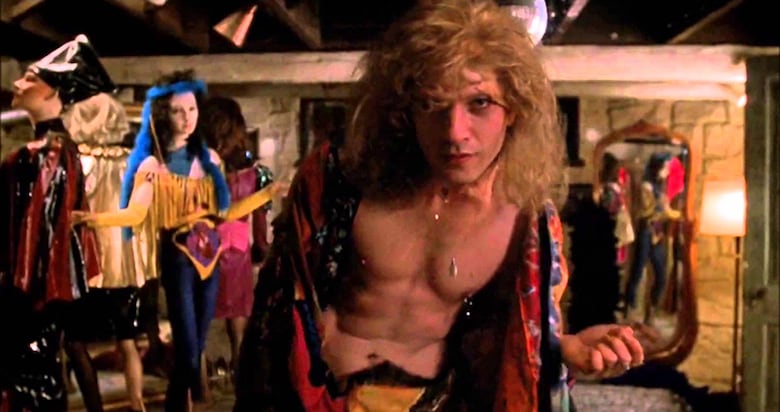
But then there’s the dance scene from A Nightmare on Elm Street 2. Almost the exact opposite of the scene from Silence of the Lambs, this dance serves to remove the tension rather than increase it. It’s completely cheesy in that pitch-perfect 80s way. Comedy certainly has its place in horror.
More recent movies have featured dance scenes that fit the feeling of the genre more concretely. Midsommar, Climax, and Annihilation all feature compelling takes on dance, and each one is terrifying in its own right. They show that there is something inherently unsettling about human movement when it is presented in the right context.
With all of this said, though, it’s important to recognize that dance being featured in horror movies is nothing new. 1922’s Häxan is one of the earliest horror movies of them all, and it has a carefully constructed dance number. Further, many famous ballets from centuries before cinema even existed mixed dance with gothic aesthetics and shocking stories.
So where does that leave us? Well, we now know that dance is something that clearly fits right into a horror movie. But let’s zoom in rather than out for a second. What is it about dance that can be so scary? Looking at two movies a bit more in depth answers this question for us.
The Twisting of the Body: Black Swan
Black Swan is one of those movies that gets scarier as each second passes. Yes, it’s one of those “elevated horror” movies, if you’re into terms like that. That means that it slowly builds up the tension by applying psychological pressure. Nina, the tortured protagonist, seemingly loses her mind more and more as the film progresses. It’s like watching someone build an ill-fated Jenga tower that is bound to collapse at any second.
But let’s put aside the oft-discussed psychological aspect of Black Swan for a moment. The film also produces much of its tension through several very physical – and very hard to watch – scenes. Many of them blend body horror with the mental warfare of leaving you unsure whether the events are real or not. When Nina pulls her cuticle until it starts ripping across her hand, it’s nauseating. When you realize that she just imagined the whole thing, it’s gut-wrenching.
A major way that the film plays upon typical body horror elements is through the dance scenes. Despite her supposed mastery of ballet, many of the shots make her dancing feel uncontrolled and dangerous. When she leaps up on her toes, it’s shot in a way where it seems like her legs might snap.
There is beauty to the ballet scenes, surely, but they are more nerve-wracking than anything. As we watch, we’re just waiting for something horrible to happen. The cinematography does an excellent job of making the positions seem unnatural and painful. That’s why the scene where Nina discovers that she broke her own toenail is so visceral. We’ve been expecting something like that to happen to her body simply from the positions she is putting herself in.
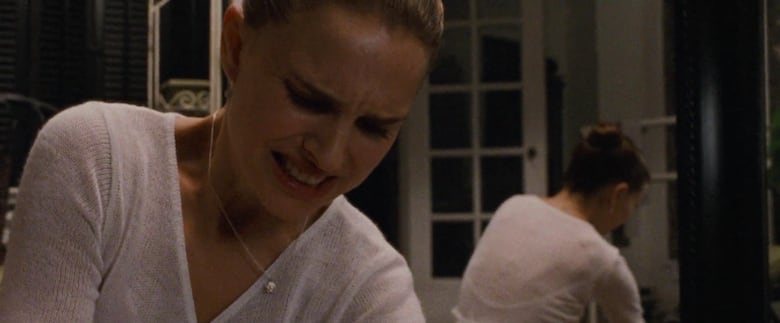
The scene where Nina receives a massage also illuminates just how the body is being treated in this movie. First of all, it highlights just how much damage is being done to her during ballet. Her whole skeleton seemingly needs to be corrected because of how she has contorted herself. But the main reason I bring up this scene is because it’s just horrifying. The sound design is very in your face when the masseuse yanks on her like so much meat.
The popping of her bones in that scene, in conjunction with the dance scenes, show off an interesting paradox of dance. The fragility of ballet is where the beauty comes from, but there is also something disturbing about it. One wrong move and the body could twist, snap, and break apart.
In the end, Nina’s body does end up being altered through dance. Feathers begin to grotesquely poke through her pores, and the skin between her toes begins to melt together to form webs. But the fragility that is being fractured there is her mental fragility rather than her physical. The main lesson of Black Swan, though, is that the two are unluckily connected.
The Twisting of the Knife: Suspiria
Suspiria is certainly a dance horror movie much like Black Swan. Unlike Aronofsky’s dark ballet, however, Suspiria doesn’t really feature all that much dancing. It’s set at a dance school, the characters are all dancers, and the plot entirely is centered around the world of dance. Despite this, there are really only a few scenes that give a lot of screentime to dancing.
This isn’t an oversight. Unlike Black Swan, the original Suspiria didn’t build tension by turning the dancer’s frames into canvases for body horror to play out. (The 2018 remake of Suspiria certainly went above and beyond in that regard, though.) Instead, the movie became more and more tense as the truth of the power dynamic of the school was revealed.
At the start of the movie, it’s made clear that something is wrong. However, the audience doesn’t have any proof. We don’t know who is connected to the disappearances of the girls, but we have a sinking feeling that some sort of conspiracy is afoot. As we learn more and more about how the higher-ups at the school are part of a wicked coven, we start to feel scared. They are controlling the girls, both with magic and with the power that they hold over them.
Dance comes into play with this method of tension-building because the ballet practice rooms are where the battles for power take place. On the surface, there is an obvious power dynamic between a dancer and their instructor, and that is doubly so when the instructor is as militant as the lovely Miss Tanner. But there is more going on here than just that.
Before Suzy gets her first chance to dance with the group, she is blinded by some kind of magical mirror that puts a hex on her. She then says that she doesn’t feel well and elects not to dance. Miss Tanner doesn’t have it, though, and forces her to get up. In a stirring scene, Suzy drunkenly tosses herself about while Tanner shouts at her to keep up. Suzy finally collapses.
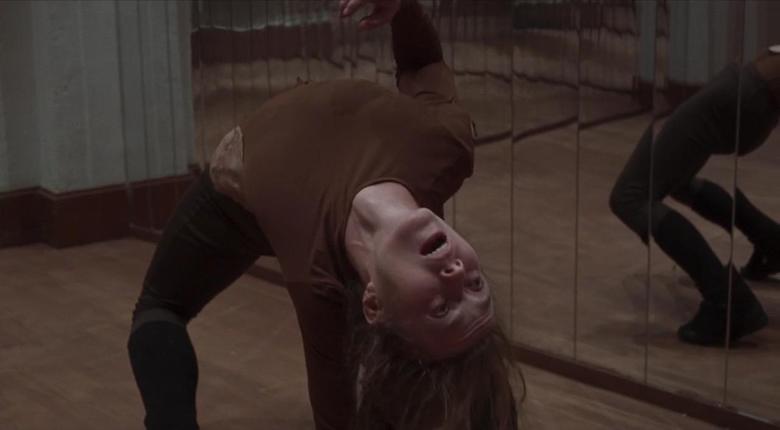
Tanner forcing Suzy to dance despite her clearly being physically unwell is a very clear moment of her exerting power over her. Suzy fights back as hard as she can, though she ultimately succumbs to the pressure of the school’s dark magic. This scene functions as a microcosm of the plot of the entire movie.
Almost every other scene involving dance is an opportunity for the instructors to overpower the dancers. Later in the movie, Suzy is in one of the dance rooms when she is approached by Madame Blanc with the offer to live at the school. Suzy repeatedly refuses until Blanc gives up and skulks off. Initially, the dialogue between them seems a bit stilted and drawn out. With the power dynamics in mind, though, it becomes clear that it was Suzy battling against the controlling powers of the school. And it’s no coincidence that the exchange happened in the practice room.
— FOUNDATIONS OF HORROR —
Further explore these subgenres & tropes. more>>
#Body horror | #Psychological horror
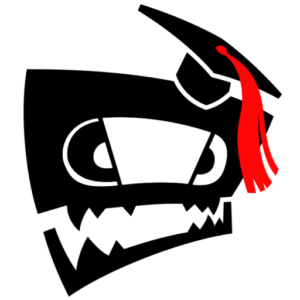
In short, Suspiria uses dance not as a source of horror but rather as a way of accentuating the tension that is already there, thanks to the plot’s structure. As the conspiracy unravels, the dance scenes become symbolic: the instructors play with their puppets, and (in the case of Suzy) the puppets fight back.
From a deeper analysis, it becomes clear that both Black Swan and Suspiria are doing very different things. However, they both show that dance is something that has a solid place in the horror canon. Dance is a series of contradictions: mechanical and fluid, quiet and powerful, beautiful and disgusting, subservient and defiant. The unsettling nature found in those contradictions is what allows it to be, at times, horrifying.
Last Updated on August 4, 2021.

